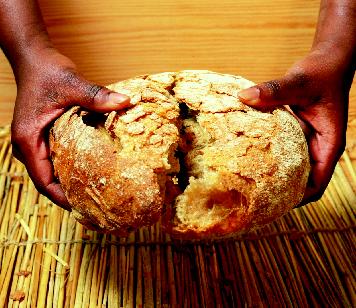
Photo from jaymuia.files.wordpress.com
I often say, “If I were queen of the world, no one would eat wheat. Ever.” This gluten-free thing that looks like a fad is not a Celiac issue, nor a gluten sensitivity issue only – it is an issue for everybody. Even if you have never had problems with wheat before, you could suddenly develop an autoimmune or neurological disorder from eating the “new wheat,” which are 99% of the wheat on the market today. Eating wheat is like playing Russian roulette with your health.
Not convinced? Let me fill you in. I love this particular food story, because it reads like a soap opera. The story of dairy is interesting (read The Untold Story of Milk), and the story of corn is too (read The Omnivore’s Dilemma) but I have to say that the story of wheat definitely takes the cake (read Wheat Belly by Dr. Davis and Grain Brain by Dr. Perlmutter). These are the best books on these topics. You can also google “gluten summit,” an online event that was just held with many world experts in the field of wheat/gluten and health.
Although many RawGirlToxicWorld readers are already gluten-free, I dare to guess that many of your friends and family are not. You need to let them know this story, so they pay attention. This story needs to be told to avoid unnecessary suffering. Send your peeps one of the books for Christmas to show your love.
The story reads like a soap opera because hybridization of wheat started off very well intentioned with efforts to make Mexico self-sufficient agriculturally and eradicate world hunger. In 1943 Mexico’s International Wheat and Maize Improvement Center partnered with the Rockefeller Foundation and brought in top agricultural geneticists to increase the yield of main crops. In the case of wheat, the tall stalk started buckling when use of nitrogen fertilizers after World War II led to heavier seed heads. The solution, developed primarily by Norman Borlaug, who won the Nobel Peace Prize for his work on wheat in 1970, was to develop a thicker, shorter stalk. This newer, shorter wheat was able to lead to increase wheat yield by eight to tenfold and helped to lessen world hunger dramatically in the 1970s.
The problem? These new dwarf wheats were never tested for safety, even though there had been significant altering of the genetic material. And so today we have a worldwide experiment going on, and we are seeing an unprecedented rise and exacerbation in health issues that seem to be connected to the consumption of the “new” “dwarf wheat” including skin problems; neurological issues; mental health disorders; obesity, diabetes and heart disease; and – of course – digestive problems.
Issue #1 – wheat gluten’s effect on the immune system. The reason consumption of wheat can trigger autoimmune disease out of the blue for anyone is because wheat has been hybridized at an accelerated pace over the last 70 years and this has resulted in freak proteins in the “new wheat”. When one grass is mated with another, 95% of the offspring proteins are the same as from one or the other parent plant – but 5% of the protein is new. So mating grasses over and over again has resulted in completely new proteins that the immune system has never seen. Plus, some very strange techniques have been used to make wheat mutate, such as use of radiation.
When the immune system is exposed to too many “foreign” particles in the bloodstream, it tends to go a little hyper and haywire. It also has a tendency to attack its own body tissue. This is why leaky gut can also lead to autoimmune disease. By the way, it allows incomplete digestion and therefore cause foreign-seeming food particles into the blood stream. This makes the immune system trigger-happy over time, leading to misfirings and autoimmune attack.
But that’s another article! The point here is that we have messed with wheat so much and in so many ways that it is completely different from the wheat that was consumed all through human history until the 1950’s.
If you have lab results definitively showing no wheat intolerance or genertic markers for it, you can theoretically eat heritage wheats like einkorn, emmer, and spelt. However, all wheats whether old or new have three characteristics which are not supportive of health. Stay tuned for Part II of Breaking Bread – Understanding how Wheat (and Gluten) Hurt Our Bodies.
– Babette
To learn more about Babette, click here





